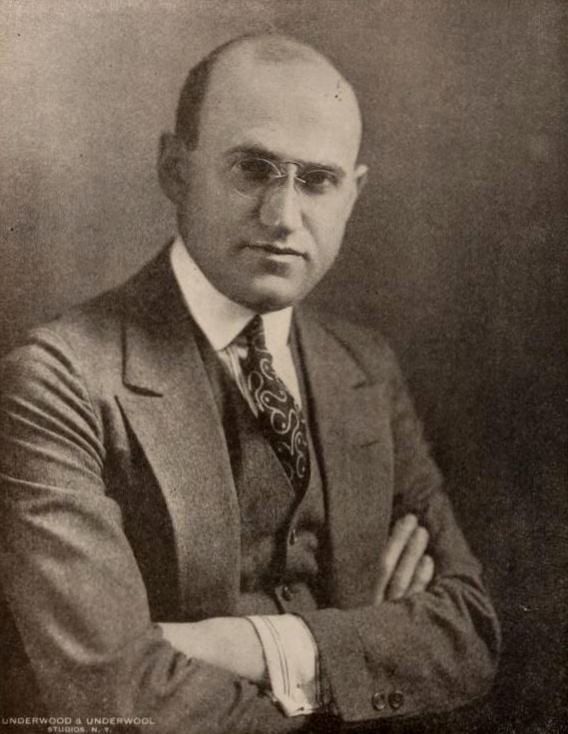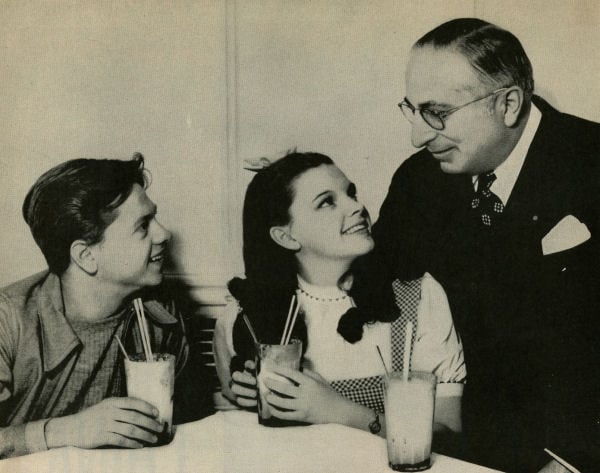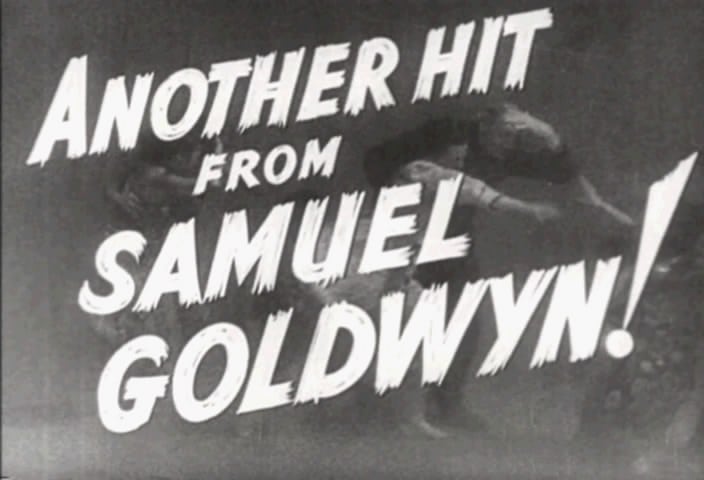Everybody who lived in at least part of the 20th century can easily recognize the cultural icon of the roaring lion before every movie by Metro-Goldwyn-Mayer Studios, known worldwide as MGM. Today the company functions mainly as an archive owned by Sony, but at its peak in the 1930’s and 1940’s it was not only the main production studio in Hollywood, but has also set the foundations of cinema, with classics such as The Wizard of Oz, I’m Singing in the Rain, Ben Hur, Gone with the Wind, the Marx Brothers films and many other movies that became eternal pillars of cinema.
The personal stories of the founders and directors of MGM are inseparable from the company’s history. They were all Jews who immigrated (or their parents did) from Eastern Europe in the mid 19th century. The story of MGM studios is also the story of the mass Jewish immigration into the United States, and the fate – whether good or bad – of those Jews who had plenty of inspiring opportunities waiting for them in the new world.
One key figure in the establishment of MGM, though not involved in its actual film making, was Samuel Goldwyn. Born Shmuel Gelbfish in Warsaw, his father died when he was a child. In 1895, when he was only 16 years old, he decided to leave to England and join some distant relatives he had there. On his way he changed his name to Goldfish. From England he went on to America at the turn of the century, and soon managed to get an American citizenship. He contacted some Jewish acquaintances in New York and together they established a new film studio.
Though a gifted entrepreneur, Goldfish apparently had a somewhat problematic personality. He used to curse his partners a lot, and to get furious in seconds – he was not an easy boss nor colleague. After a short while he quit – or was kicked of – his first company, and tried again with new partners from Broadway. The new company was called Goldwyn Pictures – whether he first changed his name once more from Goldfish to Goldwyn and then named the company or vice versa is not clear. There were lots of studios then. It was during the first World War and the public did not care much for the events in Europe at that point, however cared more and more for filling the theaters and watching movies. Although Goldwyn Pictures did not stand out nor necessarily produced great films, they did have one Gimmick of their own.
It was Goldwyn’s idea to shoot a real roaring lion in studio and use it as a logo shown before every movie – a marketing trick that proved very successful pretty soon. But once again Goldwyn’s bad temper interfered. Just when his firm was growing prosperous, and right before closing a huge deal that would eventually lead to the establishment of MGM, he decided to leave, due to conflicts with his partners. After a long legal struggle, the new company went on using his name, as well as the lion logo. Meanwhile Goldwyn started a new firm, in which he was involved until his death in 1974.

Louis B. Mayer was the other main founder of MGM, he too was born in Eastern Europe, by the name of Lazar Meir. Unlike Goldwyn, Mayer came to the United States as a baby, and helped his father, a poor Jewish welder in New York. Young Lazar had some business with metal sellers in order to help his father and like his partner was too an extraordinary entrepreneur. When he was 20 years old he entered a business of buying theater and cinema halls in New York. During the first World War, he established an actors’ agency called “Metro” with a partner, but after two years they split and he founded “Mayer Productions”. He almost immediately became famous as a highly promising young producer, whose films were extraordinary financial successes.
And so, in 1924, MGM was in fact created, following the initiation of another Jew called Marcus Lev, a businessman who knew young Mayer well. Lev merged the former “Metro” company with the new “Mayer” and the “Goldwyn” firm. Mayer was appointed the director of the new merged studios, and a new era in the history of American and world cinema has begun.
As director, Mayer had some unusual ideas for new movies. He invented the stars system, i.e. was the first who marketed a new movie using the famous names that acted in it. Some of the great movie stars ever were discovered nurtured by Mayer: Clark Gable, Judy Garland, Fred Astaire, Greta Garbo, Joan Crawford, Elizabeth Taylor, and many others. Mayer insisted that as a producer he had to protect his actors, cover up for them in romantic scandals and even help them out if they occasionally broke the law. Such was the case of Frank Sinatra, who was already a famous singer and an actor in “Anchors Aweigh”. There were stories about his bad behavior on the set and his contacts with criminals, but Mayer took care of things and silenced all rumors, using his contacts and money.

Unlike Goldwyn who had a hard character, Mayer was more easy going and usually gave the film directors a free hand. However, he was merciless towards directors who did not meet his expectations and some of them reported some serious mental scars they suffered after working for him. He also came up with the concept of star kids. Young stars such as Judy Garland told that on one hand he was a protective father figure, but on the other hand he was rough and put lots of mental pressure on them, almost mentally abused them. Elizabeth Taylor said that as a young girl she hated his domineering personality and called him “monster”.
Mayer’s unique management manners came to an end with the descent of MGM. All through the prosperous periods of the firm, Mayer had struggles with Nicolas Schenck, another Jewish Eastern European immigrant, who was Marcus Lev’s partner. Lev died in 1927, thus did not spend long in the new firm. In 1951 Schenck persuaded the MGM board of directors to replace Mayer.

Schenck and Lev’s son tried to go on and revive the sinking company. In the 1950’s, MGM produced a few more classic movies, but it was seriously descending. The world has changed, the “stars system” was fading out, and a new generation of bold film makers was rising. New studios who did better in fighting the new enemy – Television – were established. The old studio was sold a couple of times and went on producing films, but the glory of the past was never resumed.
Though MGM is for many years not the most important studios in United States as it used to be 70 years ago, it is still famous worldwide. All the founders were poor Jews who were looking for a better future and found a haven in the new media. They represent the larger Jewish American story – of leaving an old ruined world and managing on their own to make their dreams come true and to sell them to the masses in the new world.
(Translated from Hebrew by Danna Paz Prins)